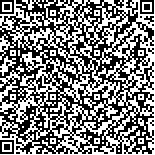蒋玙姝,李玮,秦灵芝,等.重复经颅磁刺激对缺血性脑卒中小鼠神经功能障碍及NLRP3表达的影响[J].中华物理医学与康复杂志,2022,44(7):577-582
扫码阅读全文

|
| 重复经颅磁刺激对缺血性脑卒中小鼠神经功能障碍及NLRP3表达的影响 |
|
| |
| DOI:10.3760/cma.j.issn.0254-1424.2022.07.001 |
| 中文关键词: NOD样受体蛋白3 重复经颅磁刺激 焦亡 缺血性脑卒中 神经功能障碍 |
| 英文关键词: NOD-like receptor family pyrin domain containing 3 Repetitive transcranial magnetic stimulation Pyroptosis Ischemic stroke Neurological dysfunction Interleukin-1β |
| 基金项目:河南省医学科技攻关计划省部共建项目(SBGJ2018077) |
|
| 摘要点击次数: 4500 |
| 全文下载次数: 21727 |
| 中文摘要: |
| 目的 观察重复经颅磁刺激(rTMS)对缺血性脑卒中(IS)小鼠神经功能障碍、NOD样受体热蛋白结构域相关蛋白3(NLRP3)及炎性因子表达的影响。 方法 采用随机数字表法将64只C57BL/6J小鼠分为正常对照组、模型组、假刺激组及观察组,每组16只。采用线栓法将模型组、假刺激组及观察组小鼠制成大脑中动脉闭塞(MCAO)模型。观察组小鼠于造模后24 h给予低频(1 Hz)rTMS干预,每天治疗1次,连续治疗7 d;假刺激组小鼠则同期给予假磁刺激干预;模型组及正常对照组小鼠均未给予特殊处理。于rTMS干预7 d后分别对各组小鼠进行Zea-Longa评分,采用TTC染色法检测小鼠脑梗死面积,采用免疫荧光技术检测脑梗死灶周围区域NLRP3表达变化,采用Western blot技术检测脑组织中NLRP3蛋白表达水平,选用ELISA技术检测脑组织中白细胞介素-1β(IL-1β)及 IL-18表达情况。 结果 与正常对照组比较,模型组及假刺激组神经功能缺损评分均显著升高(P<0.01),脑皮质及海马区均出现大片脑梗死灶(P<0.01),且该区域神经细胞中NLRP3蛋白表达明显增强(P<0.01),IL-1β及 IL-18大量释放(P<0.01);与模型组及假刺激组比较,观察组小鼠神经功能缺损评分明显降低(P<0.05),脑皮质及海马区脑梗死灶面积明显缩小(P<0.01),且神经细胞中NLRP3表达明显减弱(P<0.05),IL-1β及 IL-18水平也明显降低(P<0.05)。 结论 低频rTMS干预可有效促进IS小鼠受损神经功能恢复,抑制神经细胞焦亡,减小脑梗死体积,其治疗机制可能与下调神经元中NLRP3表达、抑制IL-1β、IL-18等炎性因子释放有关。 |
| 英文摘要: |
| Objective To explore any effect of repeated transcranial magnetic stimulation (rTMS) on the recovery of neurological functioning and the expression of NOD-like receptor family pyrin domain containing 3 (NLRP3) and inflammatory factors after ischemic stroke. Methods Sixty-four C57BL/6J mice were randomly divided into a normal control group, a model group, a sham stimulation group and an observation group, each of 16. All mice except those of the normal control group received middle cerebral artery occlusion using the suture method to model an ischemic stroke. After the modeling the observation group was given 1Hz rTMS daily for 7 consecutive days, while the sham stimulation group was given sham rTMS. After the intervention, Zea-Longa scores were used for all of the groups, and the size of the cerebral infarct was measured using triphenyltetrazolium chloride staining. The expression of NLRP3 around the cerebral infarction was detected using immunofluorescence, while that in the brain tissue was measured using Western blotting. The expression of interleukin-1β and IL-18 in the brain tissue was detected using enzyme-linked immunosorbent assays. Results Compared with the normal control group, a significant increase was observed in the other groups′ average neurological function impairment scores. Expression of NLRP3, IL-1β and IL-18 in the model and sham stimulation groups also increased, with large cerebral infarcts in the cortex and hippocampus. Compared with the sham stimulation and model groups, there was a significant decrease in the average neurological dysfunction scores, the area of cerebral infarction in the cortex and hippocampus, as well as the expression of NLRP3, IL-1β and IL-18 in the observation group. Conclusions Low-frequency rTMS can promote the recovery of damaged nerve function after an ischemic stroke, at least in mice. It can reduce the size of cerebral infarction, and inhibit neuronal pyroptosis, which is closely related to the down-regulation of NLRP3, IL-1β and IL-18 expression. |
|
查看全文
查看/发表评论 下载PDF阅读器 |
| 关闭 |
|
|
|